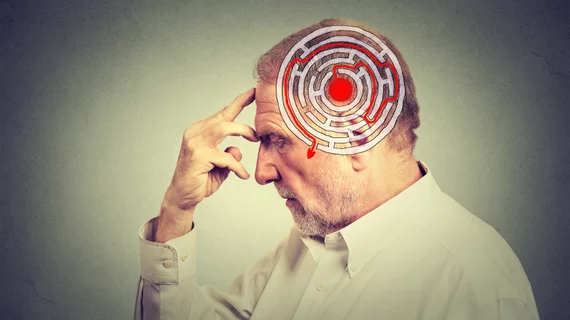CTA, transcranial Doppler not accurate in screening for delayed ischemia following brain hemorrhage
CT angiography (CTA) and transcranial Doppler (TCD) fall short in detecting cerebral vasospasm (CVS) and predicting delayed cerebral ischemia (DCI) in patients with subarachnoid hemorrhage (SAH), reported authors of a recent study published in the inaugural edition of Critical Care Explorations.
DCI is a “dreaded” secondary complication that arises after aneurysmal SAH, wrote J. Joep van der Harst, MD, of the University of Groningen, The Netherlands, and colleagues. CTA and TCD are both commonly used screening tools in these patients, but the optimal screening modality is still a matter of debate.
In the study, van der Harst et al. included 59 patients with aneurysmal SAH who were treated at the University of Groningen’s neurocritical and neurosurgical units between 2013 and 2016. Patients underwent both CTA and TCD at five and 10 days.
At both time points, CTA revealed CVS in at least one vessel in 95 percent of patients, while TCD showed cerebral vasospasm in 45 percent of patients.
DCI was observed in 16 patients, and of that total, 12 had unfavorable outcomes at six months. CTA was highly sensitive for predicting DCI (0.81), but notched a remarkably low specificity of 0.070. Alternatively, Doppler achieved a sensitivity of 0.44 (day 5) and specificity of 0.67 (day 5). The authors noted both modalities were most accurate on day five.
“Our study does not support a prominent role of screening with TCD or CTA," van der Harst and colleagues wrote. "Detection of CVS that does not become clinically manifest likely leads to overtreatment and prolonged hospital stay."
The researchers cited prior research that found CT-perfusion could predict CVS-caused DCI with a sensitivity of 0.84 and specificity of 0.79, “obviously better than CTA and TCD,” they wrote. However, they did note the technique may identify low perfusion past the point in which action can be taken to prevent ischemia.
Near-infrared spectroscopy (NIRS) is a new technique that can provide important information relative to the cerebral vasculature of a patient, the group added, but studies in aneurysmal SAH patients have so far been limited.
“CVS is frequently present on CTA and TCD, lacking accurate prediction of DCI or unfavorable outcome after 6 months,” the researchers concluded. “Although there may be a role for TCD or CTA in confirmatory testing in cases of suspected CVS, the role for screening of CVS by either of both imaging techniques is of limited value.”

